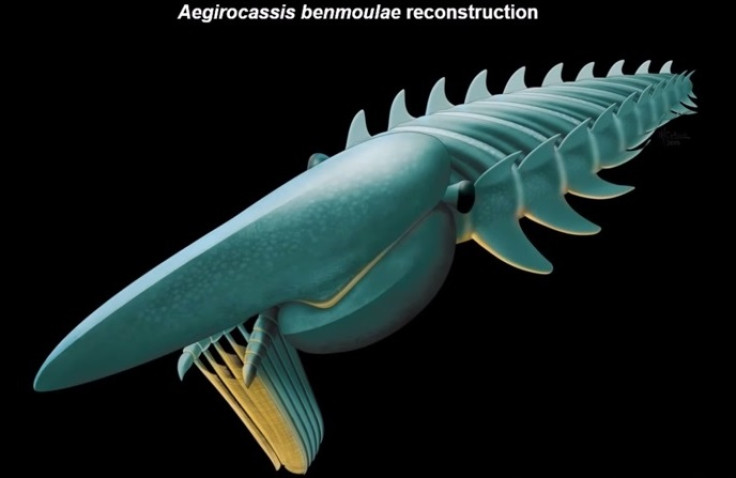Aegirocassis benmoulae: Prehistoric monster lobster was world's biggest at 7ft

A giant prehistoric species of lobster has been discovered in Morocco measuring 7ft long, making it one of the world's biggest arthropods ever to have lived.
Aegirocassis benmoulae lived approximately 480 million years ago and fed on plankton with a special filter system for feeding.
Published in the journal Nature, researchers note that the creature also had modified legs and gills, providing important evidence to show how early arthropods evolved – the first arthropod on record dates to 530 million years.
Arthropods are the most morphologically diverse and species-rich animal groups on Earth – from scorpions to butterflies to ants – and their success is largely a result of how their bodies are constructed.
They have a hard exoskeleton and their bodies and legs are made up of different segments, with each bit modified separately for different purposes. This means they can adapt to every environment on the planet.
Modern arthropods in their basic form have two branches of legs, with each modified for a specific function. Understanding where these branches came from has perturbed scientists for decades - the giant lobster, however, has the answers.
Previously, researchers looked to an extinct group of arthropods called anomalocaridids. These creatures had a head with grasping appendages and a circular mouth. Their bodies had one set flaps used for swimming, suggesting they had lost their walking legs.
However, Aegirocassis benmoulae has two sets of swimming flaps per second – the upper set being equivalent to the upper limbs of modern arthropods, and the lower flaps representing modified walking limbs. The creature represents the stage before the double-branched limbs of modern arthropods emerged.
Derek Briggs, a palaeontologist from Yale University and co-author of the study, said: "Aegirocassis is a truly remarkable looking creature. We were excited to discover that it shows features that have not been observed in older Cambrian anomalocaridids — not one but two sets of swimming flaps along the trunk, representing a stage in the evolution of the two-branched limb, characteristic of modern arthropods such as shrimps."
First author Peter Van Roy said: "It was while cleaning the fossil that I noticed the second, dorsal set of flaps. It's fair to say I was in shock at the discovery and its implications. It once and for all resolves the debate on where anomalocaridids belong in the arthropod tree, and clears up one of the most problematic aspects of their anatomy."
© Copyright IBTimes 2024. All rights reserved.






